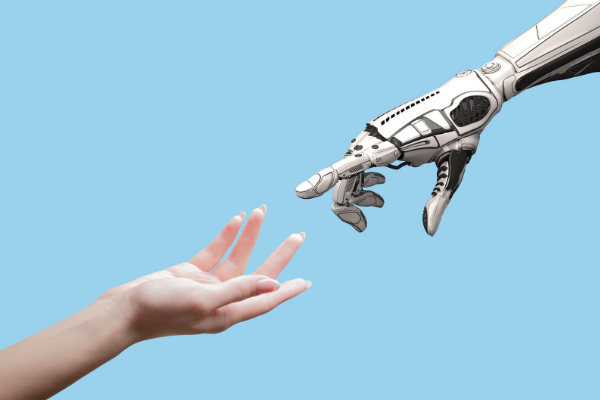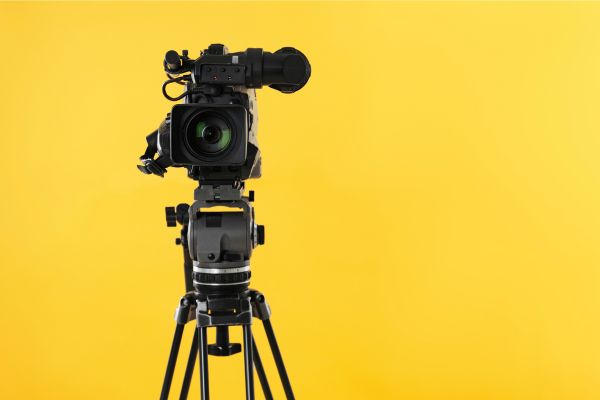Insights
INSIGHTS
All Topics
The benefits of immersive experiences
23 Jun 2022by kirsty marrins
Immersive experiences are a trend that is here to stay. How are charities using them and what are the benefits?
Immersive experiences, such as virtual reality (VR), may seem relatively new but the first VR headset was actually developed in 1968, although it was quite primitive. From the 70s to the 90s, virtual reality was mainly used for flight simulation, military training, and in certain medical settings.
As the technology has become more affordable and accessible over the years, there are a number of charities using this innovative technology in a variety of ways – from fundraising to service delivery and even virtual tours of buildings.
As reported in Tech trends for charities in 2022, VR became more widely used during COVID-19 and the trend is likely here to stay.
What is an immersive experience?
Essentially, an immersive experience allows the user to experience something deeply and realistically – whether that’s through 360 video or virtual reality.
How charities are using immersive experiences
There are so many examples of charities using immersive experiences in imaginative ways. Some are using it to fundraise, raise awareness, support beneficiaries, as a learning tool and even to thank donors. Here are a few examples.
Supporting beneficiaries
St Luke’s Hospice in Plymouth used VR, provided by a local company, to help make a patient’s dream come true. Matthew had always wanted to dive off the Great Barrier Reef in Australia and – thanks to VR technology – the charity was able to make that wish come true for him whilst he was at the hospice.
Fundraising
Using VR or 360 video for fundraising can be highly effective as it transports the viewer into a different world and can help create a deeper understanding of the need. It can help create a feeling of empathy and inspire people to donate.
In 2016, charity:water produced a VR video which told the story of 13-year-old Selam from Ethiopia. Told over six days, the viewer follows Selam as she goes to collect water every day from a dirty pond, attends school and teaches her little brother math at home. Then something magical happens – her community is transformed by clean water from charity:water and the viewer witnesses the joy it brings to them.
Viewers can immerse themselves in Selam’s world and feel as though they are there with her, experiencing clean water for the first time. It’s powerful storytelling.
VR as a learning tool
The National Autistic Society used VR as a way to help educate people about what ‘too much information’ is like for autistic people. Often autistic children are viewed as ‘naughty’ by members of the public when they witness them having a meltdown or shutdown, when actually they are experiencing anxiety, overwhelm and panic.
In shopping centres around the country, 8,000 people experienced their VR film, which was also set in a shopping centre. The aim was to show people what a ‘normal, every day’ experience, such as being in a shopping centre, was actually like for 11-year-old Alex who is autistic. The VR experience was part of a wider campaign, which ran for three years with the aim to increase people’s understanding of autism.
The benefits of immersive experiences
Easing anxiety
There are lots of benefits to using immersive experiences. Providing a 360 tour can help ease anxiety for patients who have to go into hospital or a hospice. Acorns Children’s Hospice, Royal Trinity Hospice and Great Ormond Street Hospital have 360 YouTube videos that give patients a tour of the facilities so that they know what to expect.
Showing impact
VR and immersive experiences can really bring impact to life, as the charity:water example above clearly demonstrates. It’s one thing to tell people that you provide communities with clean water and another to allow your supporters to actually experience it for themselves through virtual reality.
Bringing your cause to life
Another benefit of immersive experiences is how it can really bring your cause to life. A walk through dementia, a VR App by Alzheimer’s Research UK, allows people to experience what it’s really like to have dementia.
Designed with people with different types of dementia, it shows three everyday situations and how they can be challenging for people with dementia. It’s a common misconception that dementia is part of getting older, but it’s not. It’s a condition caused by diseases that affect the brain. It’s a powerful reminder of why we need to understand it, so we can defeat it.
As a visual aid
VR can help bring something that doesn’t exist yet, to life. Raising funds for a capital appeal, such as a new building or community garden? Trying to explain the vision for your project can be hard, so why not use VR to actually create it?
Take potential donors on a tour of your building, or garden, and help them to visualise what their donation would be funding. Being able to actually see what impact their donation would have, is powerful and compelling.
kirsty marrins
More on this topic
Recommended Products
15 Jan 2025by Laura Stanley
How to revisit your charity’s story in 2025Sponsored Article
14 Jan 2025by Christine Chiu
A simple guide to social banners and imagesSponsored Article
04 Jan 2025by Aidan Paterson
The best bank accounts for charities
Our Events
Charity Digital Academy
Our courses aim, in just three hours, to enhance soft skills and hard skills, boost your knowledge of finance and artificial intelligence, and supercharge your digital capabilities. Check out some of the incredible options by clicking here.




















